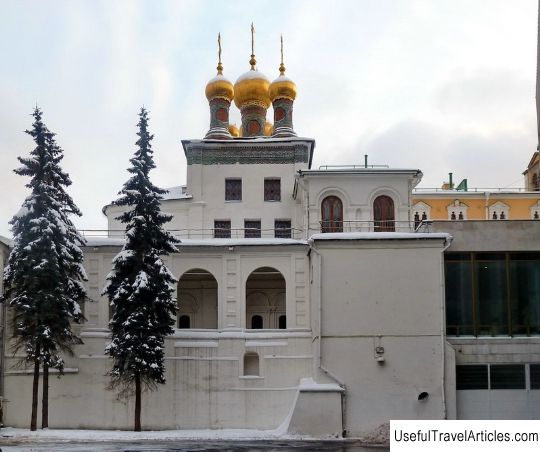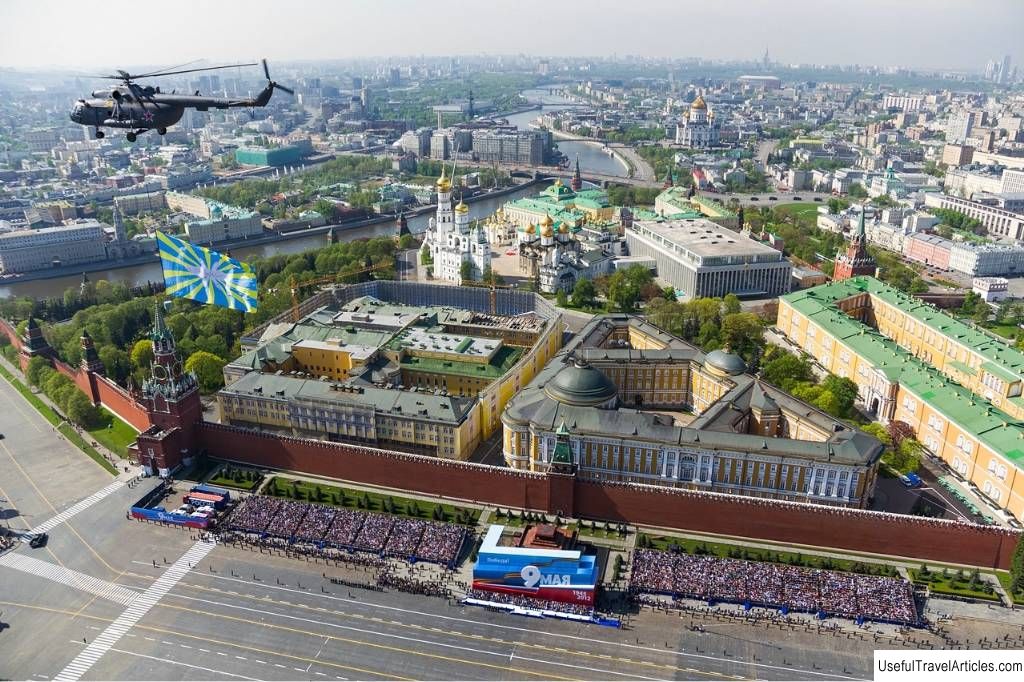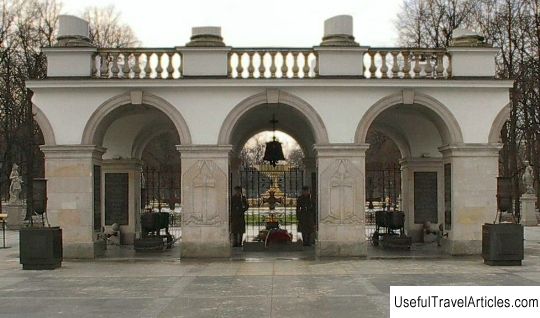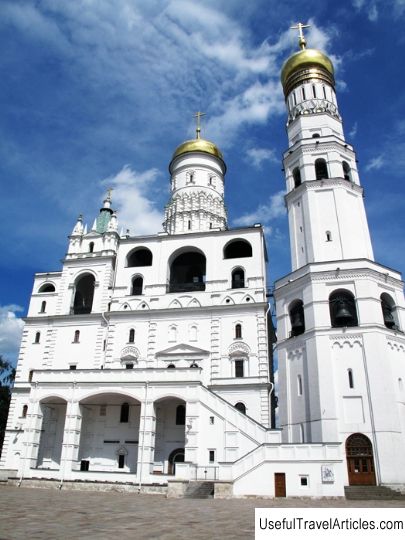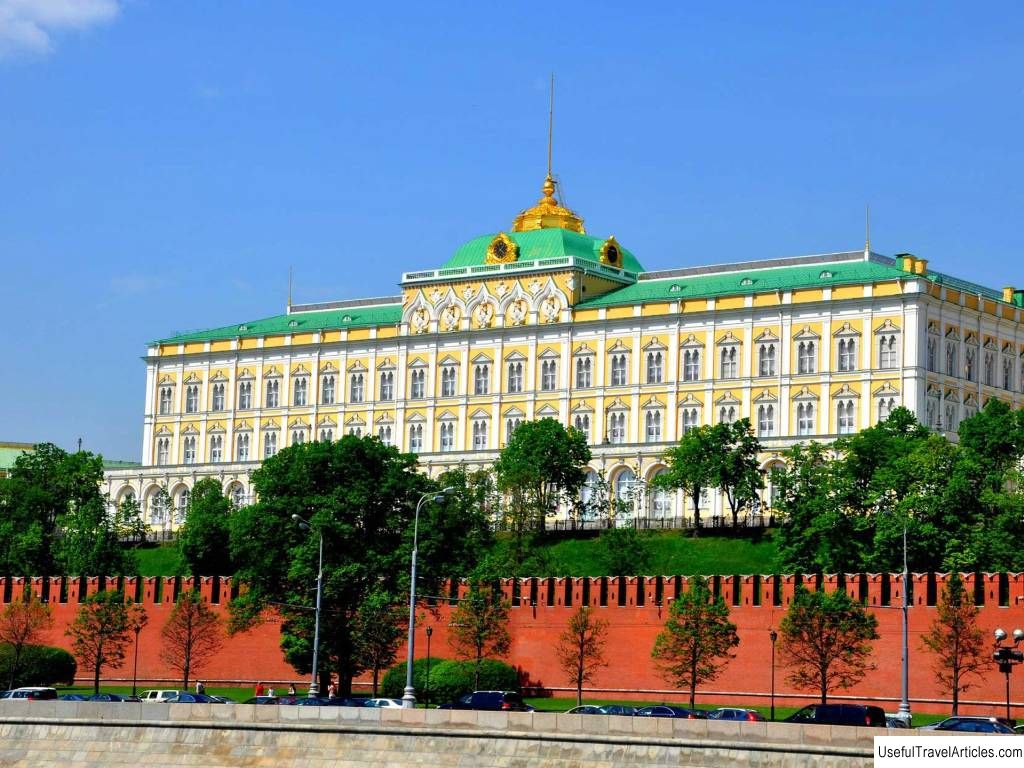Terem Palace of the Kremlin and Verkhospassky Cathedral description and photos - Russia - Moscow: Moscow
Rating: 8,3/10 (1232 votes) 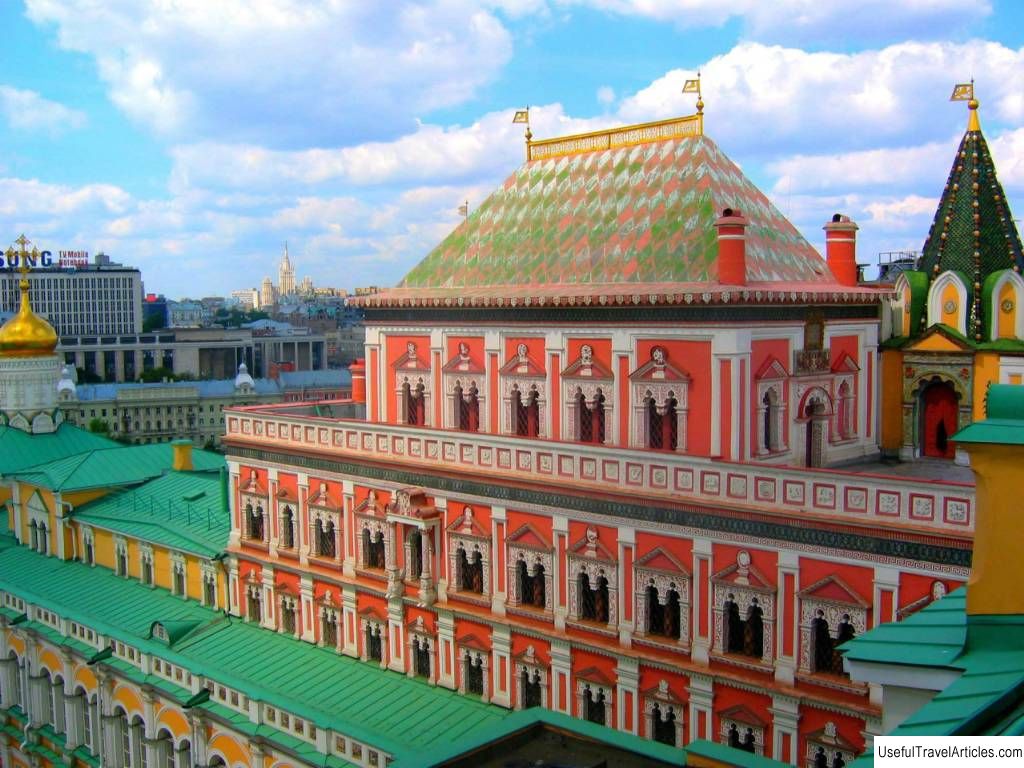
Terem Palace of the Kremlin and Verkhospassky Cathedral description and photos - Russia - Moscow: Moscow. Detailed information about the attraction. Description, photos and a map showing the nearest significant objects. Photo and descriptionThe first royal chambers made of stone, which appeared on the territory of the Moscow Kremlin at the beginning of the 17th century, were built by order of Tsar Mikhail Fedorovich and named the Terem Palace. The royal residence The Terem Palace and the Verkhospassky Cathedral, which since 1636 has been part of the complex of house churches of the Russian tsars, are part of the architectural ensemble of the Grand Kremlin Palace. The Grand Ducal Chambers over Borovitsky HillThe Great Moscow Dukes always settled in a high place. Their residences were built over Borovitsky Hill , from where magnificent views of the surrounding area opened up. The first palace on the hill was built by Ivan Kalita . Later, on the edge of Borovitsky Hill, mansions were erected for Sophia Vitovtna , the wife of the Grand Duke of Moscow and Vladimir Vasily I . At the end of the 15th century, Ivan III undertook a global reconstruction of the Kremlin buildings. Under him, the old walls, built of white stone, were torn down, and new brick ones began to be built. Several new structures were built on the territory of the Kremlin, which are now included in the lists of the most important sights of Moscow. Stone residential buildings also began to be erected at this time, and in the Kremlin, in addition to the Assumption Cathedral, the Faceted Chamber and the Archangel Cathedral, at the end of the 15th century, the buildings of the Tsar's court appeared. Their project belonged to Aleviz Fryazin, an Italian who worked for the great Moscow princes for a long time. Construction of the Terem PalaceSimon Ushakov - a highly developed and talented artist, technically much ahead of his time. The new royal mansions looked like a very large and even monumental structure. The architect skillfully combined features of the Old Russian classics and elements of Italian architecture:
The Terem Palace became one of the buildings of the Tsar's court, which occupied a large territory and included many buildings, including the Faceted and Dining Chambers, Bed mansions of the Tsar families, Embankment chambers and several house churches. What to see in the Terem Palace Each of the five floors Terem Palace had its own purpose. The three lower floors, located on the basements of the 16th century, were used for household needs . In the basements and storerooms, supplies and food were stored here, and jewelers, goldsmiths, gunsmiths and lacemakers worked in the workshops. The royal chambers were located on the third and fourth floors. The first premises, where the sovereign and members of his family got to, were walk-throughs canopy . They were covered with low arches, and the front was illuminated by paired lancet windows. The walk-through canopy was heated by stoves decorated with tiles. In the living room, the tsar communicated with the boyars and sometimes received foreign ambassadors. The Golden Chamber was the most richly decorated room of the tsar's residence. The walls of the chamber were decorated with gold painting, the vaults were painted with images of the Savior and the saints, and the royal throne, which stood in The throne chamber was covered with velvet. The long box adage was born here. In the Golden or Throne Chamber there was a box where petitions were submitted. Since petitions were considered for a very long time and reluctantly, the box began to be called “long.” Unique painting in the form of ornamental patterns has been preserved on the walls of the room adjacent to the Golden Chamber. It was called the pantry and was used to store crockery and cutlery. The royal bedchamber contains a bed made by skilled woodcarvers and decorated with a canopy made of natural silk ... The royal box was made in the 19th century, when one of the renovations of the residence took place. On the top floor of the Terem Palace, there is a stone attic, which was called Golden-Domed House . Its roof was covered with gilded sheets, which gave the name to the attic. The meetings of the Boyar Duma were held in the Golden-Domed Teremka. Adjacent to the tower is a Watchtower , in the windows of which old colored glass has been preserved. Verkhospassky Cathedral The complex of house churches of the Moscow Kremlin includes Cathedral of the Image Not Made by Hands , often called Verkhospassky. The temple was built in the first half of the 17th century and is located above the throne palace chamber on the upper tier of the Terem Palace in its male half. On the north side, Mikhail Fedorovich Romanov ordered to build a small adjoining church for Evdokia Lukyanova - his second wife and mother of the prince. The architects who worked on the project and its implementation were well known in Russia. Bazhen Ogurtsov , who led a team of builders and architects, worked in the Moscow Kremlin for about ten years. He participated in the reconstruction of the Assumption Cathedral, erected a powder warehouse, supervised the construction of an extension in the bell tower of Ivan the Great, but his main creation is called the Terem Palace and the Verkhospassky Cathedral under him. In the 60s of the 17th century at the temple a refectory appeared, and on the flat roof of the lower chambers there was a porch , connecting the chambers of the sovereign with the cathedral. At the same time, the facades were painted, five chapters of the temple were gilded, and a few years later the walls inside the church were painted by icon painters, headed by Simon Ushakov. In 1670, a gilded copper lattice was installed, blocking the stairs from the royal chambers, which led to the cathedral. The temple began to be called Savior Behind the Golden Bars . All the house churches of the Terem Palace in 1682 were brought under a single roof. The complex was crowned with eleven chapters with carved crosses. To strengthen the structure, the architects had to build an arch on wide pylons. In the XVIII-XIX centuries, the temple was restored and repaired more than once. The reason for the start of the next work was most often fires . One of them, Troitsky, damaged the iconostasis and had to be made anew. Large funds for the repair of the Verkhospassky Cathedral were allocated by the maid of honor Matrona Saltykova. Thanks to her, the altar frescoes were restored in the temple, made new royal doors and covered the iconostasis with frames with silver niello. In 1812 the French plundered many churches, and the Verkhospassky Cathedral was among the victims. Fortunately, the most valuable church utensils were evacuated in advance, but a lot had to be restored. The house church at the Terem Palace was re-painted in 1836 . The order for the next restoration came from Tsar Nicholas I . The construction of the Grand Kremlin Palace, which began afterwards, also made some changes to the layout of the Terem Palace and the Verkhospassky Cathedral. The staircase adjacent to the temple was dismantled, the Verkhospasskaya platform was blocked, and the Golden Lattice was inserted into new arched openings. The wall of the refectory facing the west was moved. Now it had three doors, each of which was decorated with decorative lattices stylized as the 17th century. Damaged by shelling during the armed rebellion of 1917, the corner of the cathedral was restored in 1920, but by that time was closed and since then there have been no divine services. The iconostasis of the Savior behind the Golden barsThe author of the iconostasis of the Verkhospassky Cathedral is the cabinetmaker Dmitry Shiryaev , who skillfully carved it made of wood in the 18th century. In the central part of the iconostasis, there is a setting of blackened silver made in 1778 at the expense of the lady-in-waiting of Saltykova . The most valuable icons of the Verkhospassky Cathedral were painted by the artists S. Kostromitin and L. Stepanov . They are located in the local lane. Particular attention is drawn to the image of the Savior Not Made by Hands , surrounded in the margins by twenty separate compositions called hagiographic stamps. In the side-chapel of the cathedral, consecrated in honor of John the Baptist, you can see ancient images painted in the 17th century. The most revered of them are icons of Our Lady of Smolensk and St. John the Baptist .   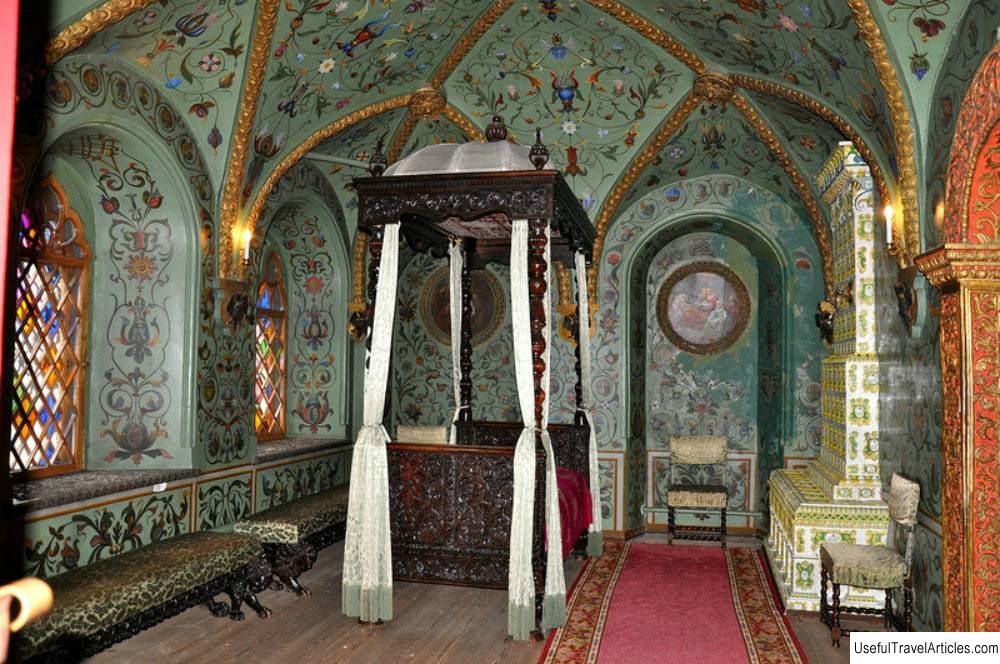    We also recommend reading Dmitrievsky Cathedral description and photos - Russia - Golden Ring: Vladimir Topic: Terem Palace of the Kremlin and Verkhospassky Cathedral description and photos - Russia - Moscow: Moscow. |

